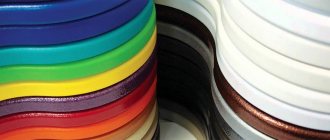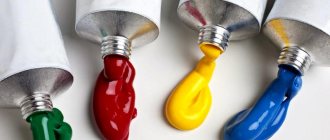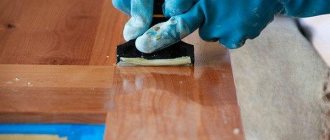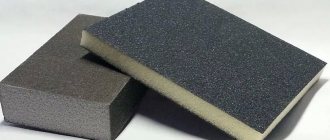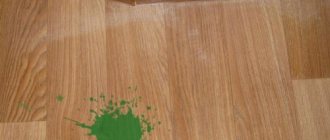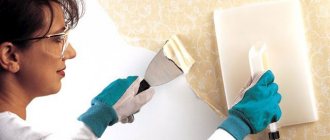In the modern world, almost everything can be made with your own hands. The stores sell special materials, equipment, and most importantly, you can easily find information to help you learn new skills. Every year, car enthusiasts spend huge sums of money on servicing and caring for their cars. To eliminate some financial costs, the driver can independently carry out chrome plating at home. This will minimize visits to a car service center, and the procedure itself is quite interesting. Metal and plastic materials and parts are subject to chrome plating. Thanks to this procedure, the car will look more attractive.
Chrome plating at home
Methods for chrome plating parts
Nowadays, there are many types of chrome plating. There are three main types of process:
- Galvanic.
- Chemical.
- Chrome plating - the essence of the method is to apply a thin layer of gold metal to the surface, which prevents corrosion and gives a magnificent appearance to the parts. After processing, the material becomes dense and wear-resistant.
To carry out chrome plating of parts at home, as a rule, a chemical method is used. It is very important to remember the need to follow safety precautions.
Galvanic chrome plating method
Galvanic method
The essence of this method is the unusual application of chromium using electric current. As a result of this effect, the material acquires completely unique properties: the surface thickens, resistance to rust increases, and the appearance becomes more attractive. During operation, the metallic substance is applied in three layers.
Chemical method
The method consists of a chemical reaction that occurs between reagents. It is recommended to apply a thin layer of copper before chrome treatment. To coat the surface with chromium, it is necessary to use chromium fluoride, sodium hypophosphate, sodium citrate, chilled acetic acid, sodium hydroxide solution and distilled water.
Restoration of chrome parts
The topic of restoring vintage cars and other various equipment is becoming more and more relevant every day. Most often, chrome plating is performed by the galvanic method, which involves the deposition of chromium from an electrolyte solution onto a metal part using an electric current. Everyone knows that the process of chrome plating parts itself is quite labor-intensive and expensive.
What to do if your part has rust bugs, signs of corrosion and your chrome is simply swollen? And you are unable to reapply new chrome plating to the part?
We will look at ways to restore chrome parts with our own hands and using improvised means, and we will also tell you how to care for chrome and not bring it to this state.
- If your coating does not have rust, but has a tarnished appearance, traces of water stone deposits, etc., then you can use goi paste
The application process is very simple, apply the paste and polish the surface with a rag until it is completely shiny.
2. If there are rust bugs, small scratches, or plaque on your surface, then you can use various polishes for chrome surfaces. Doctor Wax polish has the best reviews and price/quality ratio.
The polishing process is also quite simple, apply the paste to the surface and polish until the desired result appears.
3. If the chrome surface is rusty, the chrome is swollen, then you can save it in several cheap ways.
- The first of them is complete sanding and repainting of the part (often in matte black or body color). With this method, it is not possible to save the chrome, but it is possible to save the part itself as a whole.
- Sanding the chrome surface, coating with primer and applying chrome film
This process requires a certain skill in pasting the film. It is best to buy film from quality-tested manufacturers (after reading reviews), since cheap film has strong distortion when stretched, does not stretch well and the resource of such film will be short.
Chrome plating using chrome paint. You won’t achieve mirror chrome, but in a critical situation you can give the parts a chrome look at minimal cost.
The process of applying chrome paint is the same for almost all manufacturers; the part is cleaned, coated with primer, cleaned again and coated with chrome paint in 3-5 layers. There are also chrome paints that need to be fired with fire to create a chrome effect.
4. Complete re-chroming of the part. If your budget allows, and you want to achieve maximum effect, then, of course, none of the above methods compares with completely new chrome plating of the part.
Chrome plating technologies
In order for the product to be wear-resistant, attractive and as resistant to external factors as possible, it is necessary to follow chrome plating technology. A person who has never performed such a procedure in his life asks the question: “how to chrome parts?”
Chemical chrome plating method
The process begins with the preparation of a wooden box: it is covered with fiberglass and a thermos is made, insulated with mineral wool (or sand). The glass container is placed in a plastic basin. Next, you need to attach the “crocodiles” to the negative (they act as a cathode), and then secure the anode. To ensure uniform application of the coating, a part fixer is installed.
Do-it-yourself chrome plating at home is carried out a day after preparing the mixture. The temperature should be within 50 degrees. After completion of work, the parts must be cleaned with water and dried.
Useful tips
- In some cases, it is not possible to do chrome plating yourself, and then you can choose an alternative way to give the part a spectacular look - nickel plating.
- Chrome plating allows you to reflect the light of the Sun, but over time this property of the treated surface is lost. Therefore, the chrome surface needs to be looked after regularly. Maintenance consists of periodically washing the parts in warm water using household chemicals. After washing, parts should be wiped with a lint-free cloth. Rough cloths or brushes may damage the chrome surface.
- Low temperatures negatively affect the appearance of treated surfaces - they become dull.
- After completing the chrome plating work, you need to polish the surface.
Chrome plating of plastic parts is a feasible task, but quite labor-intensive. You will also need a significant amount of equipment, some of which (for example, a transformer) cost a lot of money. Therefore, if there is no need for regular chrome plating or a small amount of work, it is easier to turn to specialists for help.
Preparation of the workplace
Do-it-yourself chrome plating at home requires serious preparation of the workplace. As noted above, this procedure is toxic and good ventilation is mandatory. In addition, the workplace must ensure human safety.
Before starting work, you must prepare the surface, all the required tools and materials, and also put on special clothing. A thick apron, rubber gloves, safety glasses and a respirator are required.
Do-it-yourself chrome plating at home
Preparatory work
To carry out chrome plating, you will need galvanic equipment, which you can assemble with your own hands. First of all, select a brush with thick bristles. Next, remove the bristles and wrap the brush with lead wire. Then we make a special brush with a hollow plexiglass body, which we will later fill with electrolyte.
The current source will be a powerful transformer, to which we will connect the anode and cathode. Also, a car battery can be used as a source of electricity at home. However, the scheme of work in this case will be different.
We attach a diode to the brush prepared in advance, and connect the anode to the cable directed to the step-down transformer winding. The cathode itself will be fixed to the chrome-plated part. If the power source is a car battery, there is no diode in the circuit - this is the difference discussed above.
Next, we prepare a container for chrome plating and a solution with which we will process the necessary parts. To prepare the solution, take equal volumes of caustic soda, soda ash and silicate glue. We dilute all materials in water and stir. Next, bring the composition to a boil and place the parts in it. The purpose of the solution is to remove grease from plastic parts.
Immediately before starting chrome plating with your own hands, you need to put on protective clothing. After this, you can begin the main work.
Equipment
When starting work, the master must have all the necessary materials and equipment at hand. These include:
- glass containers;
- thermal insulation products;
- fiberglass;
- plastic bucket or basin;
- wooden box;
- "crocodiles";
- heating element;
- fixer for parts;
- anodes: rod and plate.
Having completed the preparatory stage, the master can begin preparing the mixture - electrolyte.
Home electroplating installation
Composition and method of electrolyte preparation
To prepare the electrolyte, you will need chromic anhydride in the amount of 250 g, sulfuric acid - 2.5 g. Purified water, heated to 60 degrees, is poured into a container (1 liter is needed) with the addition of a chemical mixture. Next, you need to mix the product well until completely dissolved, adding acid to it. The resulting electrolyte should become burgundy in color. To do this, it is “driven” for four hours with a current of 6.5 A. The mixture is infused in a cool place for about 24 hours.
Preparation rules
To chrome plating plastic at home, you need to make a special brush. The handle of such a brush, into the hollow inner part of which the electrolyte will be poured, can be made from a tube made of plexiglass. The bristles of the brush must be conductive, so it can be made from a bundle of copper wire, having first removed the insulation from it.
Brush design for chrome plating large plastic parts
An important element of the installation for chrome plating plastic is a current source, which can be a powerful transformer or a car battery. The operating diagram of such an installation will have some differences when using different current sources.
In the case of using a transformer as a current source, a diode is additionally connected to the hand prepared in advance, and when using a battery, this element is not used in the electrical circuit. The anode is connected to the step-down winding of the transformer using a cable, and the cathode is fixed to the workpiece.
Components for preparing the electrolyte: sulfuric acid, distilled water and chromic anhydride
After you have selected and prepared the container in which chromium will be applied to plastic, it must be filled with an electrolytic solution. The composition of such a solution, as well as the temperature to which it will be heated before chrome plating, depends on what characteristics the finished coating should have.
Compositions of various electrolytes for chrome plating
In addition, the plastic must be degreased before processing. To do this, perform the following steps.
- The following chemicals are taken in equal quantities - caustic soda, soda ash, silicate glue.
- All prepared components are dissolved in water and mixed.
- The resulting solution is brought to a boil, then the product to be treated is placed into it.
Surface preparation
Before processing begins, the surface of each part must be prepared. To do this you need to perform the following operations:
- dust, dirt and rust are removed from the surface of the part;
- the affected area is thoroughly washed and dried;
- the surface is degreased with gasoline.
By ignoring one of the above actions, the master risks getting a bad result. The application will be of poor quality and the surface will be unattractive.
Preparing the surface of a body element for chrome plating
Chrome plating
Where to start, and how to chrome parts at home? After preparing the workplace and surface, as well as the mixture for the process - electrolyte, you can begin the operation. The steps of the chrome plating process are given below:
- The electrolyte heats up to a temperature of 50–60 degrees.
- The part is placed so that neither side comes into contact with the edges of the container.
- Then voltage is applied.
- After finishing work, the part is washed and thoroughly dried.
All work must be carried out in special clothing.
Features of the plastic chrome plating process
Chrome plating of plastic parts is used for decorative purposes. Thanks to chrome plating, minor damage to the surfaces of the base material is hidden and its characteristics are improved. The following properties are optimized:
Purposes of metallization of plastics
- resistance to negative environmental influences;
- hardness of the base material;
- resistance to high temperatures;
- wear resistance;
- attractive appearance.
The chemical chromium plating process requires a careful and responsible approach to safety.
The work area at home should be well ventilated, because during chrome plating there may be chemically active elements in the air that can harm health. A garage or, in the summer months, an outdoor shed, as well as an open veranda with a roof, is suitable as a room for chrome plating. As a last resort, you can use the balcony.
Direct contact with the skin of the reagents used during chrome plating can lead to serious chemical burns. In addition, poisoning of the body is not uncommon.
Possible defects and their causes
If the product is prepared incorrectly, as well as non-compliance with the technology, defects in the surface of the chrome-plated part may occur. Reasons affecting the coating result include:
- The temperature regime is not maintained.
- The solution is prepared incorrectly, the concentration of substances does not meet the standards.
- The current was supplied in violation of the parameters.
- The preparation of the working surface was done poorly.
- Impurities and other particles were detected in the solution.
As a result of the influence of one of the reasons, the chrome surface may have roughness, dark spots, bubbles and cracks, peel off, have a low shine, peel off and have a completely unsalable appearance. Therefore, it is very important to properly prepare the surface and follow the technology.
Chemical chrome plating
When performing chemical treatment, a number of the following reagents are used:
- Chromium chloride;
- Sodium hypophosphate;
- Sodium citrate;
- Glacial acetic acid;
- Twenty percent sodium hydroxide solution;
- Water H2O.
During the reaction, the temperature is maintained at 80 degrees Celsius. Before applying chrome plating to a steel workpiece, they are first coated with a layer of copper. As a result, the workpieces are washed in water and dried thoroughly. Using an acid-base solution, chemical metallization of dielectrics is carried out.
In addition, another type of chemical metallization is widespread in the modern world - vacuum chrome plating or PVD process. The method provides complex condensation of chromium vapor on the surface layer of the workpiece. This happens in special vacuum chambers, where the metal is heated to an evaporation temperature, and then settles in the form of fog on a specific part. The thickness of the chrome layer is so tiny that it is additionally coated with varnish to protect it from scratches. A similar technique is used for chrome plating aluminum products.
Nuances of technology
For high-quality chrome coating of the surface, it is best to treat the part with acidic agents or another primer before starting the process. This operation will ensure high-quality application and long service life.
It is very important to degrease the surface before starting work. To do this, you can use a solvent and anti-silicone. It is recommended to remove the gloss using sandpaper. The next step should be applying primer. After it has dried, the surface is ready for coating.

